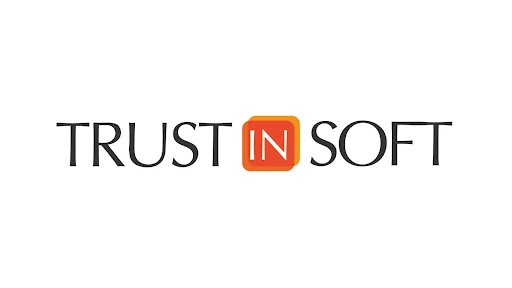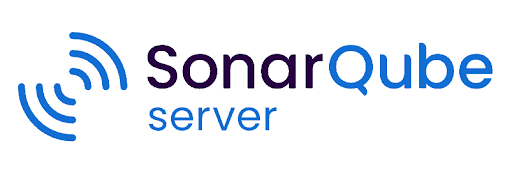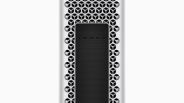
Static code analysis tools have become the cornerstone of this proactive approach, offering developers a powerful way to identify and fix problems before running their programs. In 2025, these tools bring new levels of innovation, combining speed, accuracy, and versatility to meet the demands of modern developers. Whether you're a seasoned coder or just starting, leveraging these tools can elevate your projects to new heights. Here are the top five static code analysis tools in 2025 that are setting the gold standard for software development.
What Are Static Code Analysis Tools
Static code analysis tools are essential resources for modern software development, designed to automatically inspect source code for errors, vulnerabilities, and inefficiencies before execution. By analyzing the codebase without requiring the program to run, these tools help developers identify security flaws, non-compliance with coding guidelines, and logical errors early in the development process. This proactive approach significantly enhances code quality, reducing the likelihood of costly issues during later stages of the software lifecycle.
Static analyzers can be categorized based on their capabilities. At the basic level, some tools ensure compliance with coding guidelines and industry standards, promoting maintainable and consistent code. Advanced tools, such as sound static analyzers, go a step further by employing formal methods to mathematically prove the absence of specific vulnerabilities. This capability makes them invaluable in developing safety-critical and secure systems where the risk of exploitation must be minimized.
As software complexity increases, static code analysis tools are evolving rapidly. By 2025, they are expected to feature faster scanning algorithms, support for a broader range of programming languages, and seamless integration into various development environments. Whether you are a novice programmer or a seasoned developer, these tools are indispensable for ensuring code that is efficient, robust, and secure. For further guidance on secure software practices, consider reviewing resources such as the NSA's guidance on memory safety.
How Does Static Code Analysis Tools Work?
Static code analysis tools operate by examining your source code without executing it. They rely on sophisticated algorithms to parse the code, apply rule-based checks, and detect issues. Here's a breakdown of their process:
- Code Parsing: Analyzing the code structure to understand its syntax and logic.
- Rule Application: Comparing code against predefined rules or industry standards to uncover issues.
- Error Detection: Highlighting problems like syntax errors, security vulnerabilities, or unused variables.
- Reporting: Generating detailed feedback with suggestions for improvement.
- Integration: Many tools integrate directly into IDEs, offering real-time error detection as you code.
Static code analysis tools simplify development by catching problems early, saving time, and improving code quality.
Top 5 Best Static Code Analysis Tools in 2025
1. TrustInSoft

Overview
TrustInSoft stands at the forefront of software analysis innovation, offering state-of-the-art tools and services designed to guarantee safety, security, and reliability in software development. With a mission to revolutionize the way developers craft their code, the company applies formal verification techniques to provide mathematically proven assurances of software safety. Under the leadership of CEO Caroline Guillaume, TrustInSoft draws from its research roots at the French Alternative Energies and Atomic Energy Commission (CEA), reflecting a deep commitment to advancing software engineering excellence.
Central to TrustInSoft's portfolio is the TrustInSoft Analyzer, a powerful sound and exhaustive static analysis tool that meticulously identifies memory safety issues by detecting all undefined behaviors in C and C++ code. Widely embraced by industries such as automotive, aerospace, and IoT, TrustInSoft delivers unparalleled confidence in software quality while ensuring compliance with the most demanding safety and security standards.
Outstanding Product Features
The TrustInSoft Analyzer distinguishes itself with a suite of powerful features:
- Mathematical Guarantees: Provides absolute assurance against critical vulnerabilities such as memory errors.
- Exhaustive Analysis: Analyzes 100% of the code, delivering a deeper inspection than traditional tools.
- Zero False Alarms: Ensures developers can focus solely on actual issues without distraction.
- Industry Compliance: Adheres to stringent standards like ISO 26262 for automotive and DO-178C for aerospace.
- Seamless Integration: Integrates smoothly into Agile and V-model workflows without requiring target hardware.
- Root Cause Analysis: Simplifies debugging with intuitive navigation to the source of issues.
- Ease of Use: Designed with accessibility in mind, catering to developers of all experience levels.
Pros:
- Comprehensive detection of all critical bugs and vulnerabilities.
- Mathematical verification ensures unparalleled code safety and reliability.
- Compliance with high-certification industry standards for safety-critical sectors.
- Reduces testing costs and speeds up project timelines.
- Customer-centric design that evolves based on direct user feedback.
Cons:
- Primarily focuses on C and C++, limiting versatility for projects in other languages.
- Advanced functionality might require a learning curve for beginners.
Conclusion
TrustInSoft is redefining software safety with its groundbreaking TrustInSoft Analyzer. Leveraging advanced formal methods, the tool empowers developers to identify and resolve critical bugs early in the development lifecycle. This proactive approach enhances software integrity while enabling businesses to meet stringent industry standards like ISO 26262 for automotive safety and DO-178C for aerospace certification.
What truly sets TrustInSoft apart is its emphasis on mathematical precision and exhaustive code analysis. Seamlessly integrating into existing workflows, the Analyzer provides hardware-level accuracy without requiring physical devices. Its versatility makes it a go-to solution for industries such as automotive, aerospace, and IoT. By ensuring reliable, bug-free software, TrustInSoft helps businesses reduce development costs, accelerate time-to-market, and earn user confidence in an increasingly competitive tech landscape.
2. SonarQube

Overview
SonarQube is a leading code quality and security tool designed to help developers achieve "Clean Code." Trusted by over 7 million developers and 400,000 organizations globally, including NASA, Microsoft, and IBM, it ensures high code standards across all stages of development. SonarQube is available as an on-premise or cloud-deployed solution, offering flexible integration with popular DevOps platforms. Its robust static analysis capabilities and AI-powered features safeguard against bad or insecure code, making it essential for enterprises and developers alike.
Outstanding Features
SonarQube offers cutting-edge features designed to ensure clean, secure, and high-quality code across diverse development environments.
- AI-Powered Tools: AI Code Assurance validates AI-generated code, while AI CodeFix provides instant suggestions to resolve issues.
- DevOps Integration: Works seamlessly with GitHub, GitLab, Jenkins, Azure Pipelines, and Bitbucket for auto-triggered analysis.
- Sonar Quality Gate: Enforces strict quality checks, halting builds if standards aren't met.
- Language Support: Covers 30+ programming languages with over 6,000 rules, including industry-leading taint analysis for security.
- Security Features: Includes SAST for vulnerability detection, secrets detection, and compliance with standards like NIST SSDF.
- Scalable Deployment: Deployable on-premises, in the cloud, via Docker, or Kubernetes, tailored for enterprise needs.
Pros and Cons
Pros:
- Comprehensive analysis tools.
- Real-time feedback and actionable insights.
- Flexibility in deployment and integration.
- Supports large enterprises with advanced governance.
Cons:
- The steeper learning curve for beginners.
- Advanced features are locked behind paid tiers.
- It can be resource-intensive for smaller setups.
3. CodeScene

Overview
CodeScene is an advanced code analysis and visualization tool designed to enhance code quality, optimize team dynamics, and improve software delivery efficiency. By combining technical metrics with behavioral and contextual insights, CodeScene empowers teams to tackle technical debt, improve code maintainability, and deliver faster with actionable, data-driven recommendations.
Outstanding Features
CodeScene stands out for its robust features:
- Code Quality: Leverages Code Health, a unique metric based on 25+ contextual factors, to assess and improve code quality while prioritizing technical debt reduction.
- Team Dynamics: Visualizes team knowledge distribution, identifies potential coordination needs, and tracks the impact of staff changes.
- Software Delivery Insights: Analyzes planned vs. unplanned work, branch performance, and delivery metrics like speed and frequency.
- AI-Powered Assistance: CodeScene ACE refactors legacy code, resolves technical debt, and ensures maintainability using generative AI.
- Integration-Friendly: Seamlessly integrates with CI/CD tools issue trackers like Jira and Trello and supports 25+ programming languages.
Pros and Cons
Pros:
- Offers behavioral and contextual insights beyond traditional static analysis.
- Unique Code Health metric with proven business impact.
- Integrates easily into existing workflows and supports multiple hosting options (cloud or on-prem).
- AI-driven capabilities for managing complex, legacy code.
Cons:
- It may require training to leverage its advanced features fully.
- Some tools and integrations are only accessible in paid plans.
- Focus on behavioral factors might not suit simpler projects or smaller teams.
4. CodeSonar

Overview
CodeSonar is a static application security testing (SAST) platform designed to find and address quality and security defects in source code and binaries. It supports a wide array of programming languages, including C/C++, Java, Python, Go, Rust, and JavaScript. CodeSonar integrates seamlessly into DevSecOps pipelines, enabling continuous monitoring of software quality and security. Its deep analysis helps developers address defects early, ensuring robust, secure, and high-quality software.
Outstanding Features
CodeSonar stands out for its robust features
- Whole-program analysis detects vulnerabilities across codebases.
- Supports 100+ compilers and multiple languages (C/C++, Java, Python, Go, Rust, JavaScript, etc.).
- Deep integration with development tools, IDEs, and CI/CD systems.
- Detailed reporting on defects and vulnerabilities.
- Supports coding standards like MISRA, ISO 26262 for functional safety.
- Identifies security defects based on OWASP Top 10, SANS/CWE, and SEI CERT.
- Pre-qualified for IEC 61508, ISO 26262, and EN 50128 safety standards.
- Scalable for large teams, handling millions of lines of code across projects.
Pros and Cons
Pros:
- Comprehensive support for multiple programming languages and development environments.
- Deep security and quality defect detection.
- Strong integration capabilities with DevSecOps and CI/CD workflows.
- Supports high-level coding standards for safety-critical industries.
Conns:
- Setup and configuration can be complex, especially for large teams.
- Some users report a steep learning curve for new users.
- Higher pricing might not be ideal for small development teams.
5. Coverity

Overview
Coverity Scan is a free static analysis service designed for open-source projects. It helps developers identify and fix defects in their code by scanning for vulnerabilities in languages such as Java, C/C++, Python, JavaScript, and more. Powered by Coverity Quality Advisor, it provides deep insights into code quality, with over 9,000 open-source projects benefiting from its service.
Outstanding Features
- Comprehensive Static Analysis: Coverity Scan scans entire codebases without executing the code, ensuring no path is overlooked.
- Multi-Language Support: It works with a wide range of languages, including Java, C/C++, Python, and JavaScript.
- Defect Identification: It detects a broad range of issues, such as resource leaks, memory corruptions, and unsafe use of signed values.
- Easy Integration: It integrates with various build systems like Git, Maven, and Ant.
- Free Service for Open Source Projects: The tool is free for open-source projects that register with the service.
- Regular Updates: Coverity Scan is regularly updated to support larger builds and offer enhanced functionality.
Pros and Cons
Pros:
- Free for open-source developers.
- Provides thorough defect detection across a variety of languages.
- Easy to integrate into existing development workflows.
Cons:
- Limited to open-source projects.
- Requires a build system for integration.
- May be complex for beginners to set up without prior experience.
Conclusion
Static code analysis tools in 2025 are indispensable for developers aiming to boost code quality, enhance security, and streamline efficiency. These tools cater to diverse needs, offering everything from in-depth security audits to seamless integrations with modern development workflows. Whether you prioritize robust security, broad language compatibility, intuitive interfaces, or efficient integration, there's a tool tailored to your goals.
Choosing the right static code analysis tool is a strategic investment that simplifies your development process and mitigates long-term risks from bugs and vulnerabilities. By leveraging the best tools available, you can ensure your projects uphold the highest standards of reliability and excellence.
ⓒ 2025 TECHTIMES.com All rights reserved. Do not reproduce without permission.




